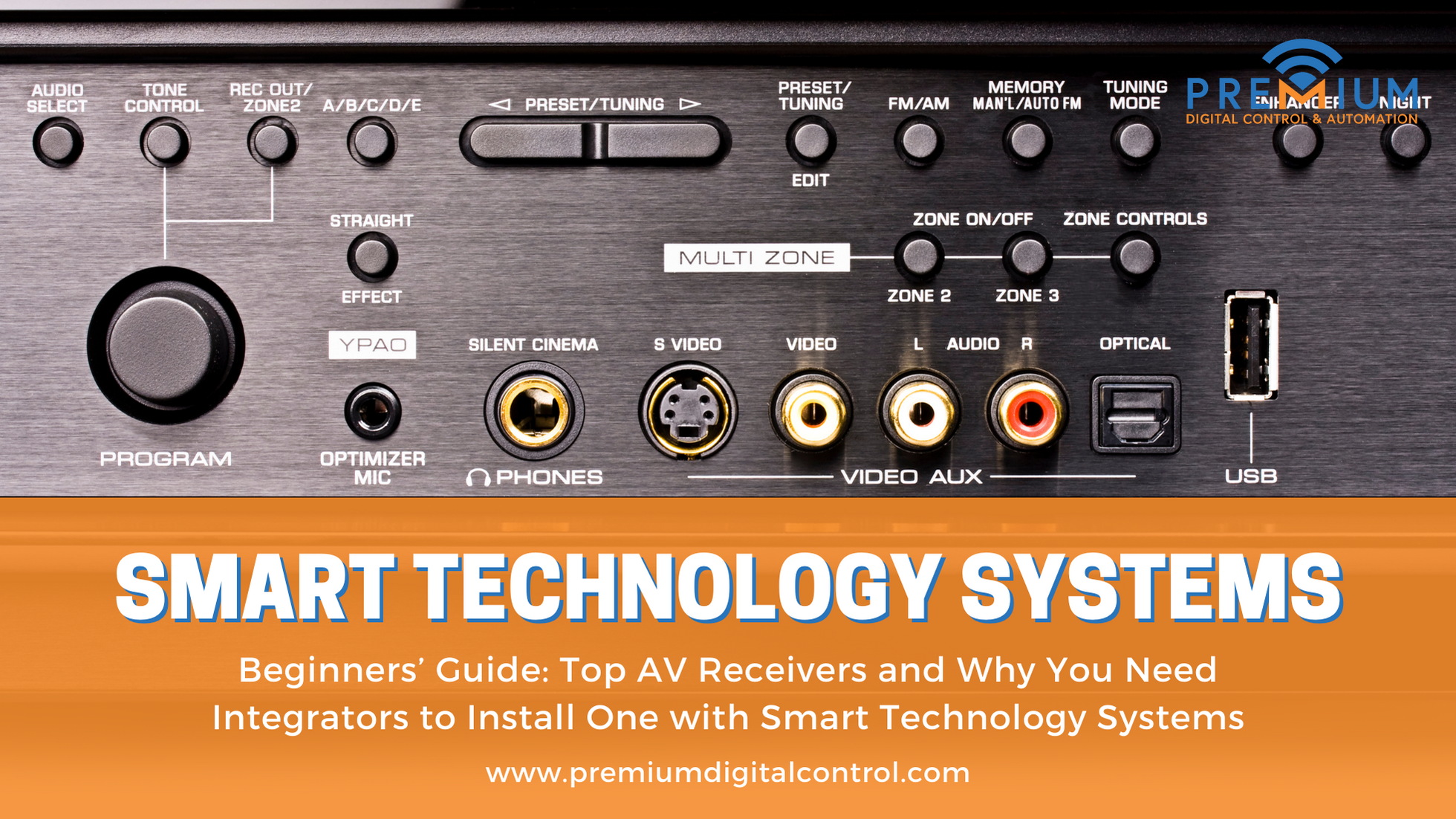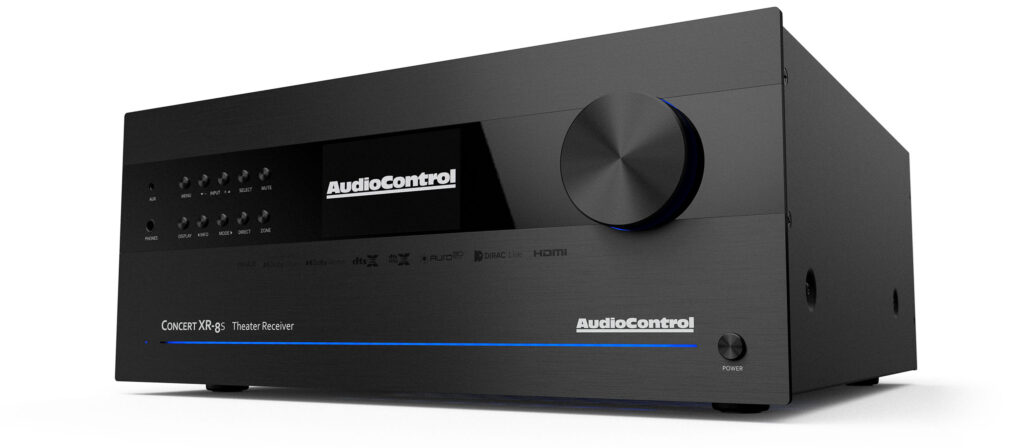
AudioControl's Concert-XR-8S receiver
All too often, people see a TV with a set of speakers and some theater or comfy seats and think it’s a home theater system already. Upon closer inspection, though, there’s an AV (audio-video) receiver in there – a detail that may be lost to someone who’s not an audiophile.
What is an AV receiver or home theater receiver and why do you need to have it? Think of it as the conductor of your audio-video system that routes video from your sources to your display (TV or projector) and sends audio to your speakers.
Other than your display screen choice (TV or projector) and speakers, you have the AV receiver. The AV receiver basically receives a TV audio signal, interprets it and processes it before transmitting it to the TV/projector, speakers and of late, even your game console.
An AV receiver can be integrated with your smart home system of choice – Control4, Crestron, Savant, and OVRC (remote access) which means you’ll need Premium Digital Control’s AV specialists and smart technology experts so you can enjoy your sound system along with other smart technology integrations that you have installed or need installation in your place.
Other smart technology products you can integrate with your home theater or media room can be a host of things – your smart lighting, motorized window treatment, climate control system, surveillance and CCTV cameras, to name a few.
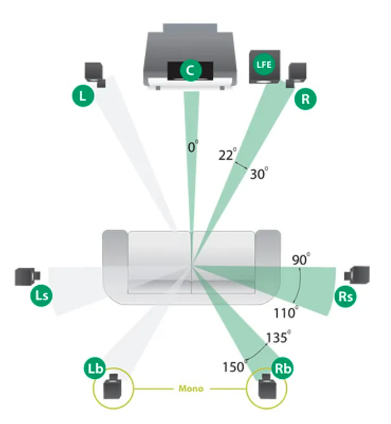
Channel configuration
Right number of channels for your AV receiver
You’ll also hear channels mentioned alongside AV receivers. An AV channel represents the position of each audio source. Each channel provides an amplification to power the speakers. The most common channel is 5.1 but the ideal channel system would need to be 7.1 and upwards; if you have more space, that is.
Beyond the graphic explanation here, channel numbers basically mean they are configuration options: 5.1 means 5 speakers and 1 subwoofer; a 7.1 would mean 7 speakers and one subwoofer. Once you go up, configurations can be customized.
Having more channels means you get more detailed sound, many configuration options, and greater control over your sound system. With 7.1 you can have three speakers (left, center, right) in front of you, two on your side and two surround speakers behind you.
Some settle for a 5.1 but since most of our clients don’t have space issues, you can go higher than the base level 7.1, especially with some new AV receivers.
What makes a good AV receiver
What makes a good AV receiver?
The no-nonsense approach to checking out an AV receiver’s potential: The more inputs and outputs the better.
But it’s not just that, of course. You can ask a technician about its power measured in wattage, as well as the receiver’s connectivity and AirPlay capability.
You also need it to work in multiple zones (i.e., rooms). It’s a function that allows a media room to send more than one source signal to speakers in different locations such as a restaurant-bar or your mansion in Palm Beach, Florida.
For instance, you can be watching a Blu-ray Disc movie in your main area, while a family member or guest is listening to a CD player in another room at the same time.
With many people potentially enjoying your AV system, the receiver you or the integration will choose for you has to be user-friendly. However, note that if you have a smart technology system set up, your AV receiver may be tucked away somewhere in a rack.
Other than those essentials, the best AV receivers should have most of the following, so you can fully enjoy its use and purpose in your household or place of business:
Dolby Atmos
Dolby Atmos expands on existing surround sound systems by adding height channels, allowing sounds to be interpreted as 3D objects with neither horizontal nor vertical limitation.
Dolby Vision
Dolby Vision offers advanced high dynamic range (HDR) color. HDR complements HD and UHD displays. Rather than increasing resolution, HDR focuses on the brightness, contrast, and color of the image. It lets you see more detail with better color accuracy.
DTS:X
DTS:X makes sound move around you like it would in real life
IMAX Enhanced
IMAX Enhanced works on most 4K HDR TVs, but to fully enjoy it with its immersive audio in your home theater environment, you’ll need an IMAX Enhanced-certified device.
Auro-3D
Auro-3D is the next generation 3D audio standard. It provides a realistic sound experience unlike anything before. By fully immersing the listener in a cocoon of life-like sound, Auro-3D creates the sensation of actually “being there”.
8K & 4K/120 HDMI Connectivity
Support for 8K & 4K/120 video sources goes a long way. The most advanced model has four 8K HDMI inputs and two outputs, so you get the most stunning picture quality.
Roon-ready
Roon is an incredibly rich and engaging way to browse and organize your music. Network players transparently discover and connect to Roon without any configuration.
Dirac Live
Dirac Live determines the essential speaker settings for all the speakers in your system, calculates room equalization (Room EQ) filter values to remove some of the worst effects of resonant frequencies in the listening room.
Dirac Live Bass Control
It delivers spatially consistent bass response to make the most of your subwoofer setup. The result is improved staging, better clarity and intelligibility in music and vocals, and deeper, tighter bass without resonance. It means subwoofers will have a better integration with each other and with the main speakers.
What AV receiver brands to choose
There are many outstanding AV receivers that can provide a truly immersive experience. Here are the top brands and models featuring more than 9-configurable channels (not in any particular order):
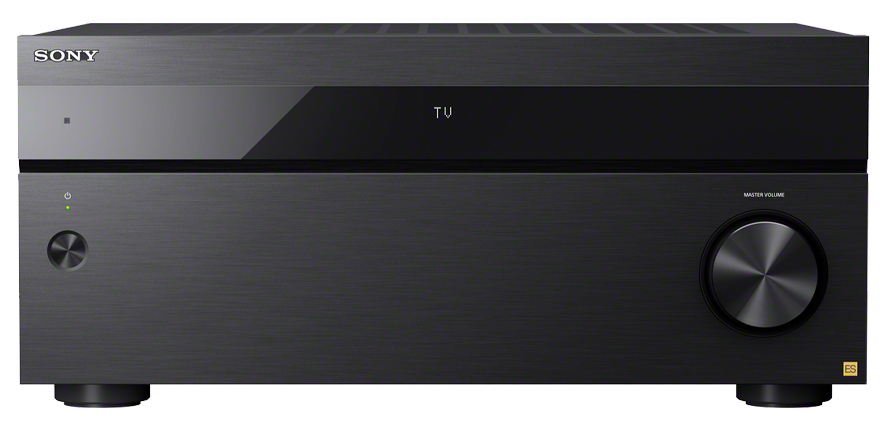
Sony's STR-AZ7000ES
Sony’s new STR-AZ7000ES. Equipped with the latest technology, including multiple HDMI inputs and outputs supporting 8K and 4K/120 video sources, it contains the following 13.2 -channel speaker configuration in the main zone: 9.1.4; 7.1.6; 5.1.5.3; 7.1.4; 7.1.2; 5.1.4; 5.1.2 using top middle speakers; 7.1; 5.1.2 with bi-amplifier connection.
It’s interesting to see Sony come back with new AV receivers in more than 5 years. Sony has an impressive 360 Spatial Sound Mapping in its new product lineup of four models. The sound field it creates feels like you’re in a large movie theater or concert hall. It has a livelier sound.
If you’re using Sonos with the receiver, the app can turn on your AV Receiver, switch to the designated input source for playback, and control the volume of your AV Receiver. Sonos is a wireless option that may not be to your liking if you’re a serious home theater aficionado.
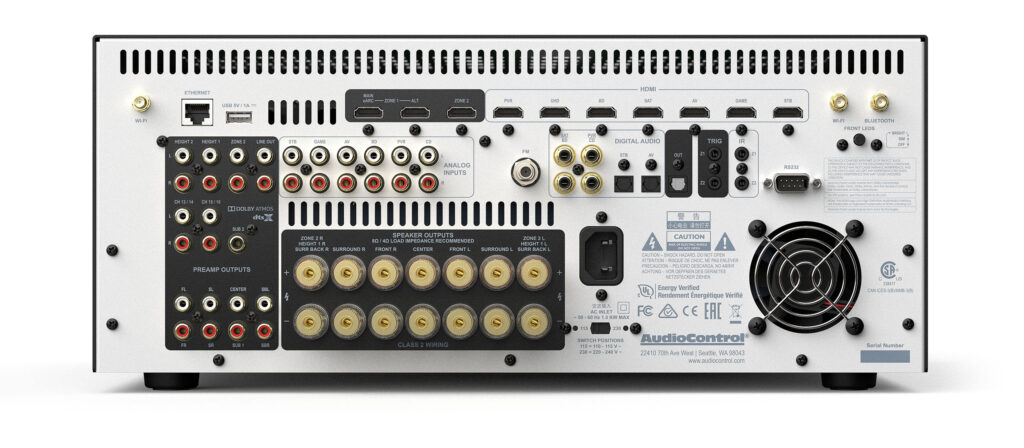
The more inputs and outputs the better. Photo shows the back of AudioControl concert XR-8S with 7 HDMI connections
AudioControl’s concert XR-8S is an immersive AV receiver that supports formats such as Dolby Atmos, Auro–3D, DTS:X, and IMAX Enhanced with 16 configurable channels. It also features Dirac Live room correction meant to overcome acoustic anomalies in any space as well as ESS SABRE PRO DACs for an authoritative earth-shaking bass response. More models are available on its site.
Integrators love Audio Control for its strong configurability options and wide array of choices to offer customers, including amplifiers and processors. AudioControl’s concert XR-8S ticks all the boxes of the best things AV can get.
Marantz’s SR8015 is an 11.2 channel 8K AV receiver with HEOS built-in; it’s how the product is compatible with all of your favorite smart devices. Marantz has a softer sound with a more balanced bass.
Denon’s AVR-x8500h’s 13.2 channel speaker setup supports DTS:X and Dolby Atmos, with up to 7.1.6 or 9.1.4 speaker configurations, and 13.1 channel Auro-3D configuration. And with eight HDMI inputs and three HDMI outputs, you can customize your home theater as you see fit. It has a strong and more dynamic bass with well-defined effects.
Takeaways
Most home theater guides are written mostly for DIYers looking to install their own basic system but our blog post is for a beginner looking to learn a few things before the installation experts come in. So if you’re in the market for home theater systems or media rooms with 5.1 channels and above, you’ll need technicians with both AV expertise and smart technology skills for integrating them all for you. Even more so when you go beyond 7.1 channels, because that’s a sign that you are looking for your audio system to work in different zones (i.e, rooms).
The AV receivers mentioned here will enable these specialists and integrators to create a system that will deliver the results with precision, power and control. From our experience, most residences will not just settle with a home theater system when more integrations are now needed. These can be smart lighting, motorized window treatments, surveillance cameras, thermostats and many more.
For more information, contact Premium Digital Control & Automation at (877) 619-2466 or fill out our contact form, so you can get help right away. Our friendly technicians can guide you all the way when it comes to your own home theater or media room.


